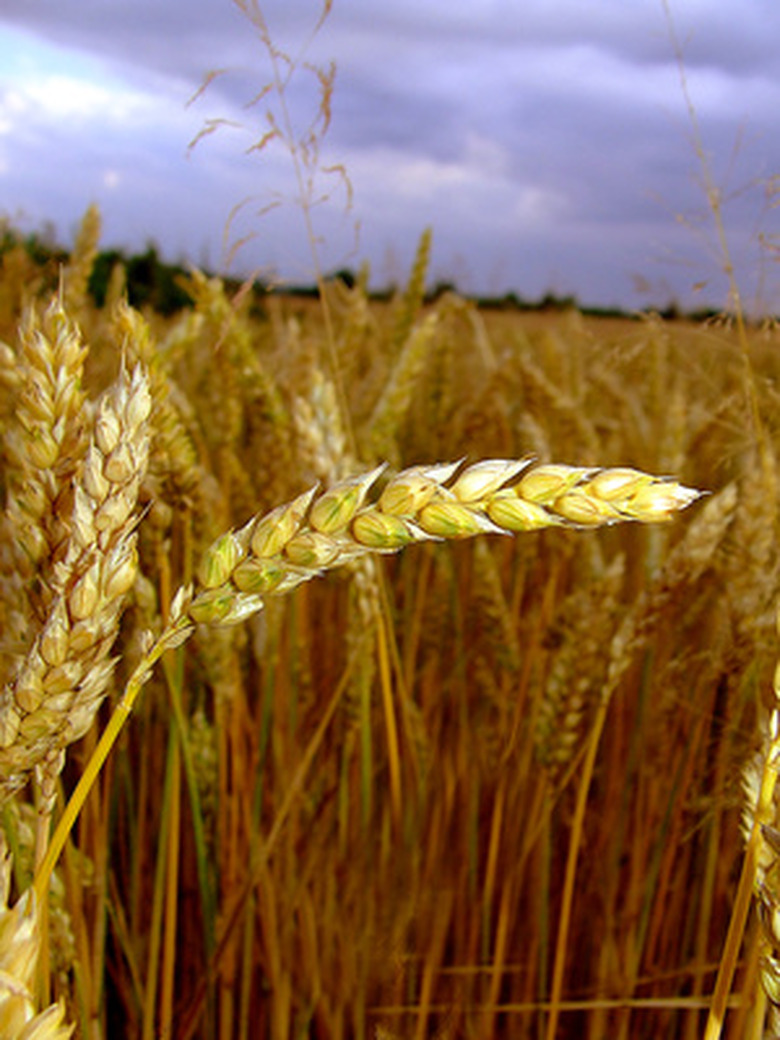Parts Of The Wheat Seed
The wheat seed, also known as a wheat kernel or grain, is tiny, brown and rather inconspicuous. Inside that seed, however, are the makings of a new wheat plant. Wheat seeds are among the most widely used of grains, being processed into flour and other wheat-based products. Wheat seeds are made up of three primary parts; the bran, the endosperm and the germ.
Bran
The bran is the hard outer shell of the wheat seed that protects it from weather, insects, fungi, and bacteria. Bran makes up about 15 percent of the total dry weight of the seed. Within the bran are the pericarp, the seed coat and the aleurone layer. The pericarp is made of an outer layer called the epidermis, also known as the beeswing, and inner layers called the hypodermis, cross layer, and tube layer. The seed coat, also called the testa, controls the movement of water into the seed and is separated from the final aleurone layer by a thin layer of nuclear cells. Bran contains the vast majority of the vitamins and minerals in the wheat seed including B vitamins, iron, copper, zinc, and antioxidants and is high in soluble fiber.
- The wheat seed, also known as a wheat kernel or grain, is tiny, brown and rather inconspicuous.
- The bran is the hard outer shell of the wheat seed that protects it from weather, insects, fungi, and bacteria.
The Endosperm
The endosperm is the largest part of the seed, making up roughly 83 percent of the wheat kernel. It is primarily a food source for the seed when it germinates and begins to sprout. Mostly starch, the endosperm also contains a significant amount of protein. The endosperm is the source of refined, white flour.
The Germ
The germ makes up the final 2 percent of the seed. It is the actual embryo and possesses the genetic material from which the new wheat plant will grow. The parts of the germ are the scutellum, which secretes essential enzymes and absorbs the nutrients from the endosperm during germination; the plumule, from where the leaves will grow; and the radicle, which forms the roots of the plant. Wheat germ has the highest levels of oil, which can significantly reduce shelf life and is usually removed from the seed during processing flour to reduce the risk of rancidity. Wheat germ also contains vitamin E and B vitamins.
- The endosperm is the largest part of the seed, making up roughly 83 percent of the wheat kernel.
- Wheat germ has the highest levels of oil, which can significantly reduce shelf life and is usually removed from the seed during processing flour to reduce the risk of rancidity.
